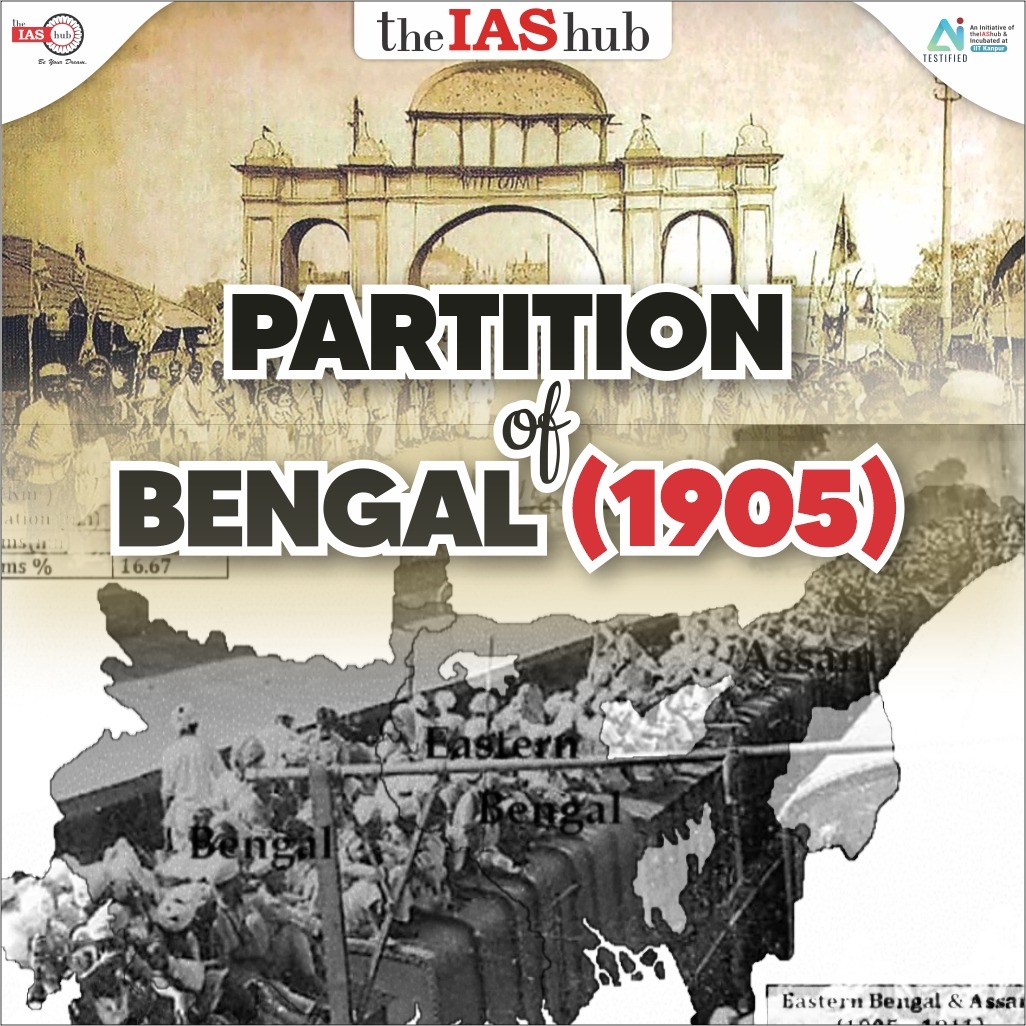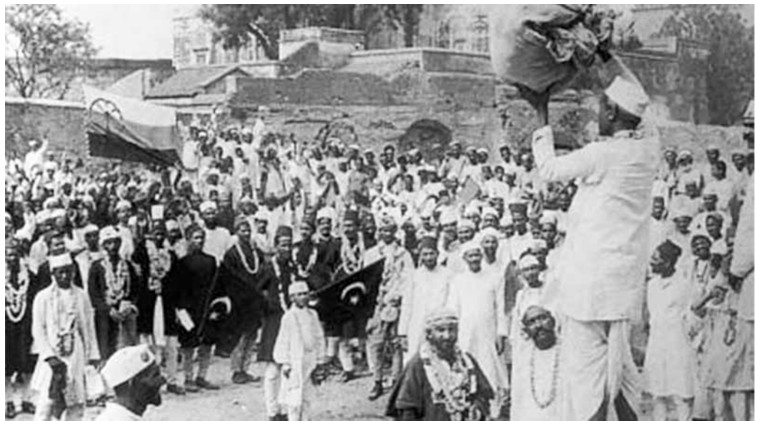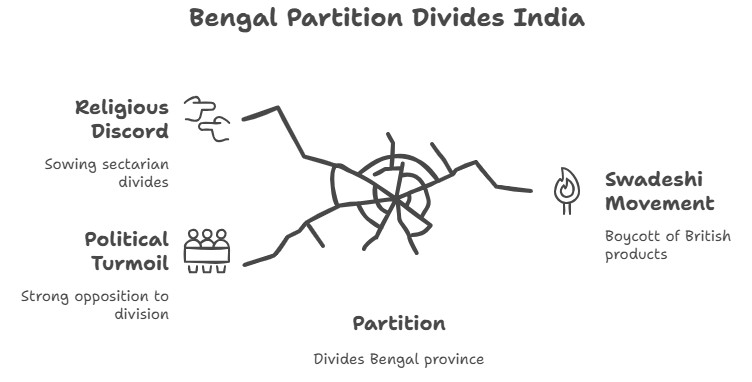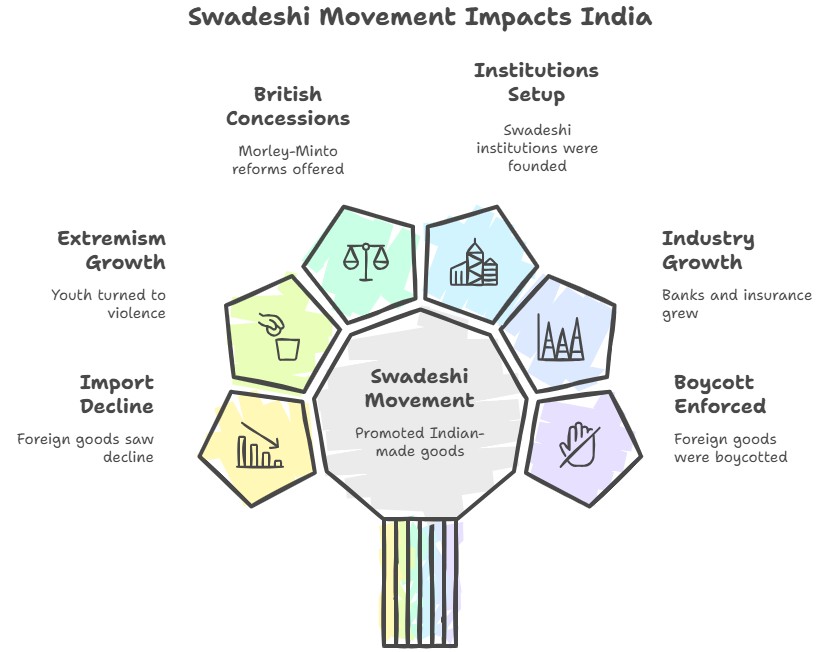Explore the Swadeshi and Boycott Movement sparked by Bengal's 1905 partition. Learn how Indians promoted self-reliance, boycotted British goods, and strengthened nationalism, inspiring future struggles for independence.


The Swadeshi Movement, born out of the 1905 Partition of Bengal, marked a turning point in India’s freedom struggle. It ignited the spirit of self-reliance, economic nationalism, and mass resistance against British colonial rule.
The partition of Bengal in 1905 stands as a watershed moment in India's fight against colonial rule, symbolizing the spirit of resilience, unity, and the unyielding pursuit of freedom. It was announced by Lord Curzon, the viceroy of India at the time, on July 20th, 1905, and went into effect on October 16th, 1905, only to be reversed six years later.
Administrative Motives: The British government justified the partition on administrative grounds, citing the need for better governance and improved efficiency in the administration of the vast Bengal province. The Bengal Presidency was British India's largest province, with a population of 78.5 million people.
Territorial Division: The Bengal Presidency included the states of Bengal, Bihar, and parts of Chhattisgarh, Orissa, and Assam. It was divided into two separate provinces: Bengal with a Hindu majority and Eastern Bengal and Assam with a Muslim majority.

|
Interesting Fact:
|
|
Interesting Fact:
|

The movement eventually faltered due to several factors:
Though the movement fizzled out it demonstrated the power of mass mobilization, united action, and economic nationalism in challenging British authority. It ignited a sense of national pride and laid the foundation for a united and resolute fight against British colonialism.
Following the split, the British felt they had regained control over the Indian National Congress (INC), with the Moderates continuing to lead the Congress while the Extremists operated separately.

While the split weakened the organization temporarily, it also paved the way for a more assertive and radical phase of the nationalist movement, setting the stage for future struggles for independence.
Indian nationalists drew inspiration from the nationalist movements in Ireland, Japan, Egypt, Turkey, Persia, and China, as these movements shattered the illusion of European invincibility.
|
Country |
Nationalist Movement |
Key Points |
|
Ireland |
Irish Land War (1870-1882) & Home Rule Movement (1870s-1910s) |
- Land reforms to favor tenants - Advocacy for self-government for Ireland within the UK |
|
Japan |
Meiji Restoration (1868, continued into 1870s) |
- Modernization, industrialization, and westernization - Abolition of the feudal system |
|
Egypt |
Orabi Revolt (1879-1882) |
- Anti-European and anti-Ottoman revolt led by Ahmed Orabi - British intervention led to a British protectorate |
|
Turkey |
Young Turk Revolution (1908) |
- Restoration of the Ottoman constitution - Beginning of modernization and reduction of European influence |
|
Persia |
Persian Constitutional Revolution (1905-1911) |
- Demanded a constitution and parliament - Aimed at reducing foreign influence and modernizing Persia |
|
China |
Hundred Days' Reform (1898) and anti-foreign Boxer Rebellion (1899-1901) |
- Short-lived reform movement and anti-foreign uprising - Efforts to modernize and reduce foreign influence |
The act was passed in the wake of the Swadeshi movement and was seen as a response to the nationalist challenges to colonial legitimacy and authority during the Swadeshi movement.
Provisions:
Evaluation of the reforms: The ‘constitutional’ reforms were aimed at dividing the nationalist ranks by confusing the Moderates and at checking the growth of unity among Indians. The Government aimed at rallying the Moderates and the Muslims against the rising tide of nationalism.
Importance of reforms: It effectively allowed the election of Indians to the various legislative councils in India for the first time. The introduction of the electoral principle laid the groundwork for a parliamentary system.
Congress was largely unsatisfied with the reforms. Only some members like Gokhale put to constructive use the opportunity to debate in the councils. The reforms of 1909, gave the people of the country, a shadow rather than substance. The people had demanded self-government but what they were given was ‘benevolent despotism’.
Morely Minto Reforms – as a beginning of communalism in India
The growth of communalism in India can be traced back to historical factors such as the partition of Bengal in 1905, the Morley-Minto Reforms, and the policy of separate electorates. These events created divisions along religious lines and provided platforms for communal politics.
Reasons leading to the growth of communalism:



Refine your answer writing skills and elevate your UPSC preparation with personalized support and expert feedback.
Fill out the form to get started with the program or any other enquiries !








Are you dreaming of becoming an IAS officer? Then, IAShub can be your best guide. It is one of the Best IAS Coaching in Delhi. Many students who want to clear the UPSC exam join IAShub for learning. The institute gives both online and offline classes. Their teachers are experienced and helpful. They easily explain every topic. Students also get notes, tests, and tips to do well in the exam.
IAShub is in Delhi and is trusted by many UPSC students. It offers coaching for every part of the UPSC exam – Prelims, Mains, and Interview. The classes are simple and easy to understand. The teachers are experts and guide students in the right way. IAShub is also known for its helpful notes, test series, and answer-writing practice. IAShub is the best coaching in Delhi and also gives UPSC Online Classes. This helps students from any place in India to learn. The online classes are live and also recorded. So, students can watch them anytime. These classes cover the full UPSC syllabus.
Here are some important services provided by IAShub:
The UPSC Civil Services Exam has three parts:
This exam is tough, but with the right guidance, it becomes easy to manage. Students must study smart and stay regular.
IAShub supports students from the beginning to the end. It gives the right books, tests, and notes. The classes are easy to follow, and the teachers are always ready to help. Students get personal doubt sessions too. The test series and answer checking help students learn where they need to do better. Also, free study materials save time and money.
IAShub also guides students during the final stage – the interview. Experts take mock interviews and give useful tips. This full support makes IAShub one of the best IAS coaching in Delhi.